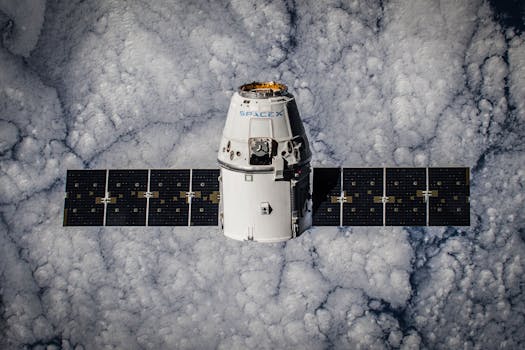
Breaking Barriers: How Recent Developments are Transforming Satellite Communication. The satellite communication industry has undergone significant transformations in recent years, driven by advances in technology, changes in market demand, and the emergence of new players. These developments have broken down barriers and opened up new opportunities for satellite communication, enabling faster, more reliable, and more accessible connectivity.
One of the key drivers of this transformation is the development of new satellite constellations, such as OneWeb and Starlink, which are designed to provide global coverage and high-speed connectivity. These constellations are made up of hundreds or even thousands of small satellites, which work together to provide a network of interconnected satellites that can provide seamless coverage and high-speed data transfer. This has enabled the provision of fast and reliable internet services to remote and underserved communities, breaking down the digital divide and opening up new opportunities for economic development and social inclusion.
Another significant development in satellite communication is the use of advanced propulsion systems, such as electric propulsion and Hall effect thrusters. These systems enable satellites to maneuver more efficiently and effectively, allowing them to maintain their position and altitude with greater precision. This has improved the overall performance and lifespan of satellites, reducing the need for costly and complex maintenance operations. Additionally, advanced propulsion systems have enabled the development of smaller and more agile satellites, which can be launched at lower cost and with greater flexibility.
The development of new materials and manufacturing techniques has also played a key role in transforming satellite communication. Advances in materials science have enabled the creation of lighter, stronger, and more durable materials, which can withstand the harsh conditions of space. This has led to the development of more efficient and effective satellites, which can operate for longer periods and with greater reliability. Additionally, new manufacturing techniques, such as 3D printing, have enabled the rapid production of complex satellite components, reducing production time and cost.
In addition to these technological developments, changes in market demand have also driven the transformation of satellite communication. The growing demand for connectivity and data transfer has created new opportunities for satellite operators, who can provide services such as broadband internet, mobile connectivity, and data transfer. This has led to an increase in investment in the satellite industry, with new players entering the market and existing players expanding their offerings.
The transformation of satellite communication has also been driven by regulatory changes, which have enabled greater flexibility and innovation in the industry. The adoption of new regulatory frameworks, such as the FCC’s rules for small satellites, has simplified the process of launching and operating satellites, reducing the barriers to entry for new players. This has led to an increase in innovation and competition, as new companies and technologies enter the market.
Section 1: Recent Developments in Satellite Constellations
The development of new satellite constellations is one of the most significant recent developments in satellite communication. These constellations are designed to provide global coverage and high-speed connectivity, enabling fast and reliable internet services to remote and underserved communities. OneWeb and Starlink are two of the most notable examples of these constellations, with hundreds or even thousands of small satellites working together to provide a network of interconnected satellites.
These constellations have broken down barriers and opened up new opportunities for satellite communication, enabling the provision of fast and reliable internet services to remote and underserved communities. This has significant implications for economic development and social inclusion, as access to the internet and other digital services can have a major impact on economic growth, education, and healthcare.
Section 2: Advances in Propulsion Systems
Another significant development in satellite communication is the use of advanced propulsion systems, such as electric propulsion and Hall effect thrusters. These systems enable satellites to maneuver more efficiently and effectively, allowing them to maintain their position and altitude with greater precision.
This has improved the overall performance and lifespan of satellites, reducing the need for costly and complex maintenance operations. Additionally, advanced propulsion systems have enabled the development of smaller and more agile satellites, which can be launched at lower cost and with greater flexibility.
Section 3: New Materials and Manufacturing Techniques
The development of new materials and manufacturing techniques has also played a key role in transforming satellite communication. Advances in materials science have enabled the creation of lighter, stronger, and more durable materials, which can withstand the harsh conditions of space.
This has led to the development of more efficient and effective satellites, which can operate for longer periods and with greater reliability. Additionally, new manufacturing techniques, such as 3D printing, have enabled the rapid production of complex satellite components, reducing production time and cost.
In conclusion, recent developments in satellite communication are breaking barriers and transforming the industry. The development of new satellite constellations, advances in propulsion systems, and new materials and manufacturing techniques are just a few examples of the many exciting developments in this field. As the industry continues to evolve, we can expect to see even more innovative solutions and applications for satellite communication, enabling faster, more reliable, and more accessible connectivity for all.






